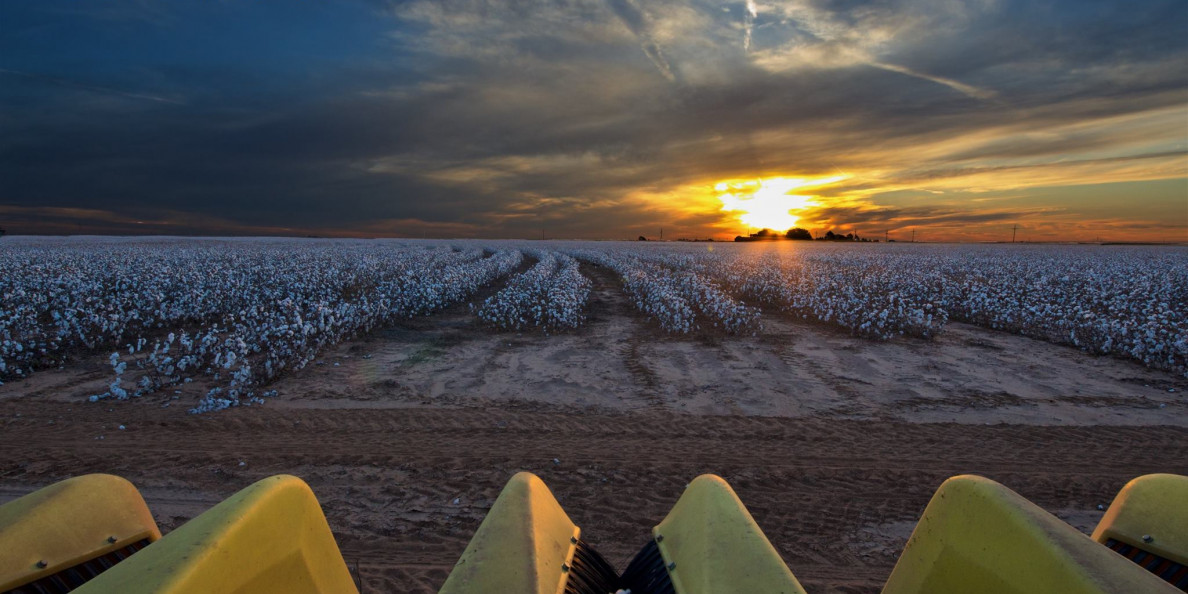By Jeff Thompson, Autauga Quality Cotton Association
I’ve written many commentaries over the years. I must say this has been the most difficult to pen, by far. Words can’t describe the utter devastation left in the wake of Hurricane Michael nor the emotions it triggered.
As someone who owns a farm in its path, it takes on personal meaning for the victims are not nameless faces but rather lifelong friends, family and neighbors.
In my 40-plus years in the cotton industry, I have never seen a crop decimated over such a wide area so quickly. It certainly puts things in perspective.
You realize a cotton crop is more than supply-and-demand numbers, technical indicators and global market influences. Instead, it’s someone’s livelihood where for months every ounce of their effort, energy, sweat, devotion and money have been put into nurturing a crop, only to lose it in a matter of hours.
Record Crop Swept Away In Minutes
It’s even more heart breaking and frustrating to know we were poised to deliver record yields already sold at above-average prices. This was going to help shore up farm finances while allowing for needed capital investments.
Instead, crop insurance and low interest loans will not be enough to cover expenses and make farmers whole. It’s akin to being sucker punched from behind.
In times like this you question many things. Trying to find a positive becomes nearly impossible. We can be thankful most survived. For a storm of this sheer magnitude, that is a blessing. We must rely on our faith in God, who tells us he will never burden us with more than we can bear if we simply trust in him.
Lastly, the agriculture community is probably the most unselfish profession I know. Individuals do not hesitate to go beyond the expected to aid and support their friends and neighbors in times of crisis. Though things may look bleak, we must draw from these for comfort and confidence in the knowledge we will overcome this disaster stronger and more resilient than before.
Preliminary Loss Estimates – On And Off Farms
Determining actual cotton losses may take some time, but early estimates have losses ranging from 20% to 100%, depending on the proximity to the eye. These estimates reflect only potential yield losses and do not account for what most certainly will be fiber quality discounts.
After doing some math, we estimate slightly more than a million bales were lost to Hurricane Michael in the tri-state area of Alabama, Florida and Georgia. Better put, this represents a loss of 400 million dollars to cotton producers in the area.
Economically, when you factor in the trickle-down effect where every dollar made on farm commodities exchanges hands seven-fold, it becomes a $2.8 billion loss to the overall economies. It was a storm of major proportions that will have serious implications for some time to come. We extend our heartfelt thoughts and prayers to all who were affected.
WASDE Adjustments Are Imperative
Since early September the U.S. cotton crop has shrunk, considerably. Aside from Michael, we’ve also seen losses due to Florence, an early Texas freeze and boll rot issues brought about by extensive rains in many locations. All those events have been factors.
Would someone please enlighten USDA to this fact? Their October WASDE report issued last week showed U.S. production basically unchanged from the previous month. Fortunately, they finally revised Indian stocks. That, in turn, significantly lowered world ending stocks
Otherwise, the report would have been seen as bearish. Instead, the market found support in the mid 70s.
Looking Toward The 80s, But When?
Nonetheless, there is no reason this market shouldn’t be higher with the beating the crop is taking in its late stages. Since the hurricane, prices have traded slightly higher but on low volume, settling yesterday at 77.92.
What’s needed is for the spec community to find reason to buy the market once again rather than sit idly by with money in their pockets. Barring any decline in demand, which isn’t foreseen, we feel a return to the 80s is very likely in light of current crop conditions.
The question becomes when? As expected basis is strong for premium grade cotton, now. Those with uncommitted cotton should take advantage of this, seizing any opportunity to price cotton in the 80s.
Πηγή: Agfax


